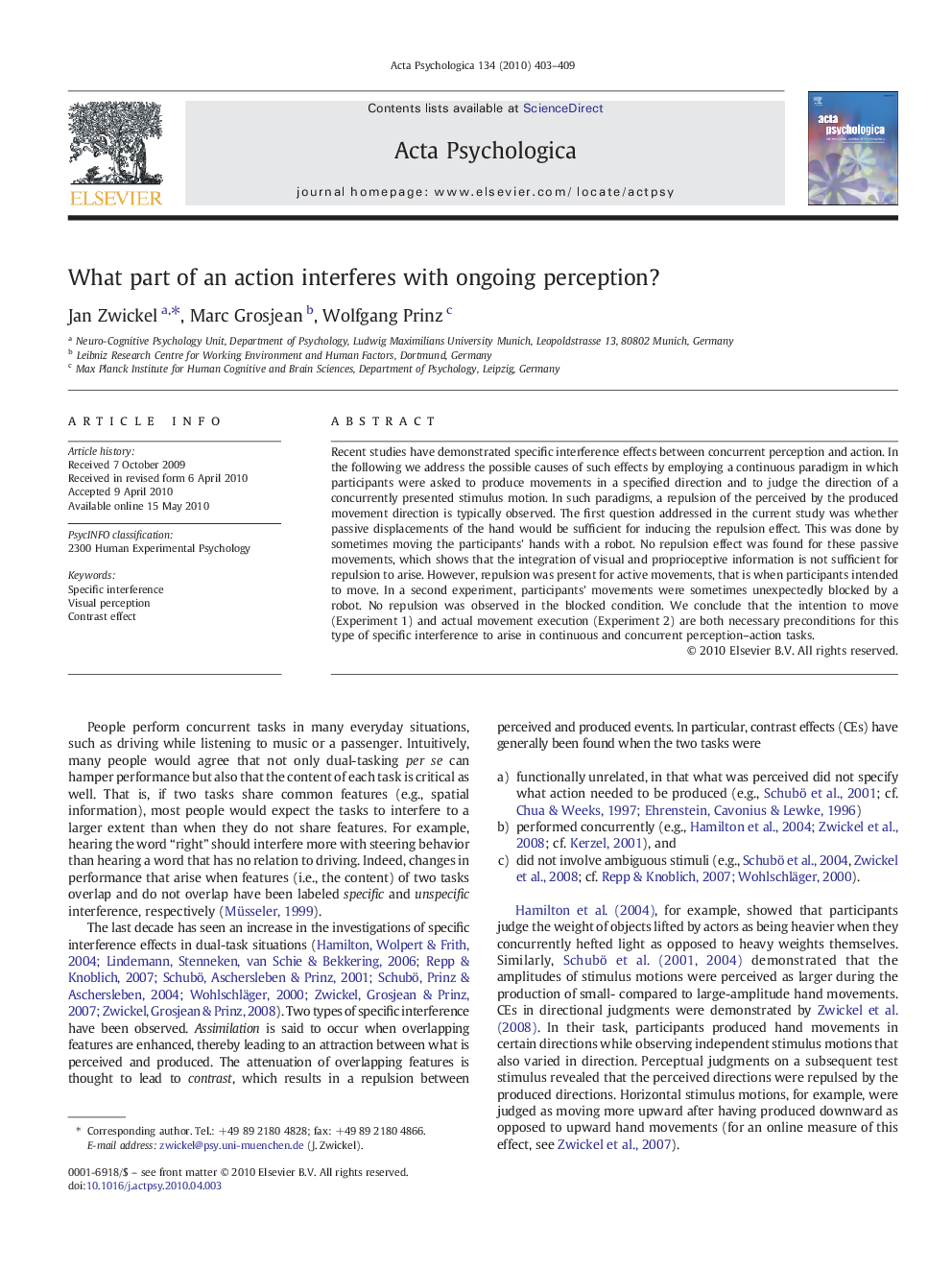| Article ID | Journal | Published Year | Pages | File Type |
|---|---|---|---|---|
| 920086 | Acta Psychologica | 2010 | 7 Pages |
Recent studies have demonstrated specific interference effects between concurrent perception and action. In the following we address the possible causes of such effects by employing a continuous paradigm in which participants were asked to produce movements in a specified direction and to judge the direction of a concurrently presented stimulus motion. In such paradigms, a repulsion of the perceived by the produced movement direction is typically observed. The first question addressed in the current study was whether passive displacements of the hand would be sufficient for inducing the repulsion effect. This was done by sometimes moving the participants' hands with a robot. No repulsion effect was found for these passive movements, which shows that the integration of visual and proprioceptive information is not sufficient for repulsion to arise. However, repulsion was present for active movements, that is when participants intended to move. In a second experiment, participants' movements were sometimes unexpectedly blocked by a robot. No repulsion was observed in the blocked condition. We conclude that the intention to move (Experiment 1) and actual movement execution (Experiment 2) are both necessary preconditions for this type of specific interference to arise in continuous and concurrent perception–action tasks.
